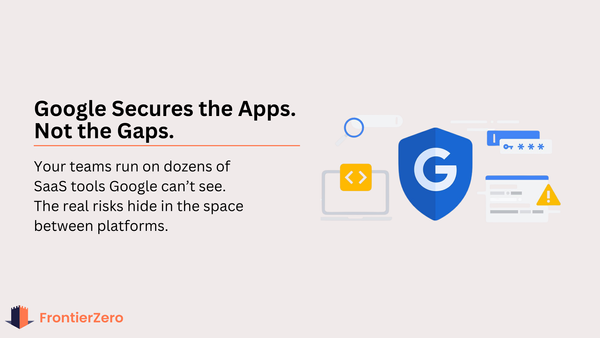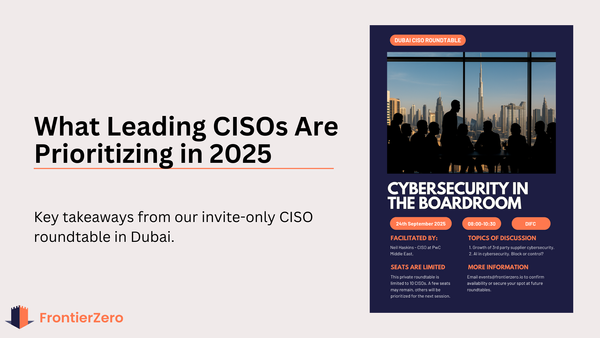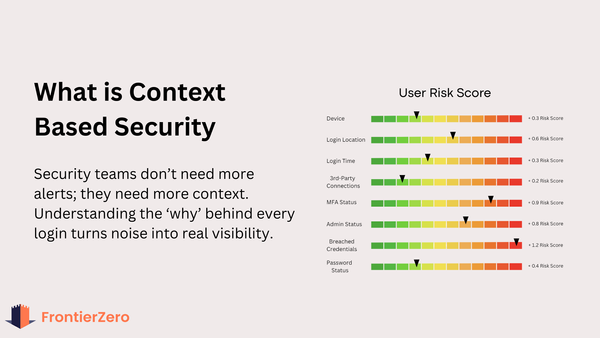What is SSPM and why it’s essential in 2025.
SaaS tools are the new business layer—but they’ve created a visibility gap security teams can’t ignore. This guide explains what SSPM is, why it matters, and how FrontierZero brings identity and context together to reduce risk where it matters most.
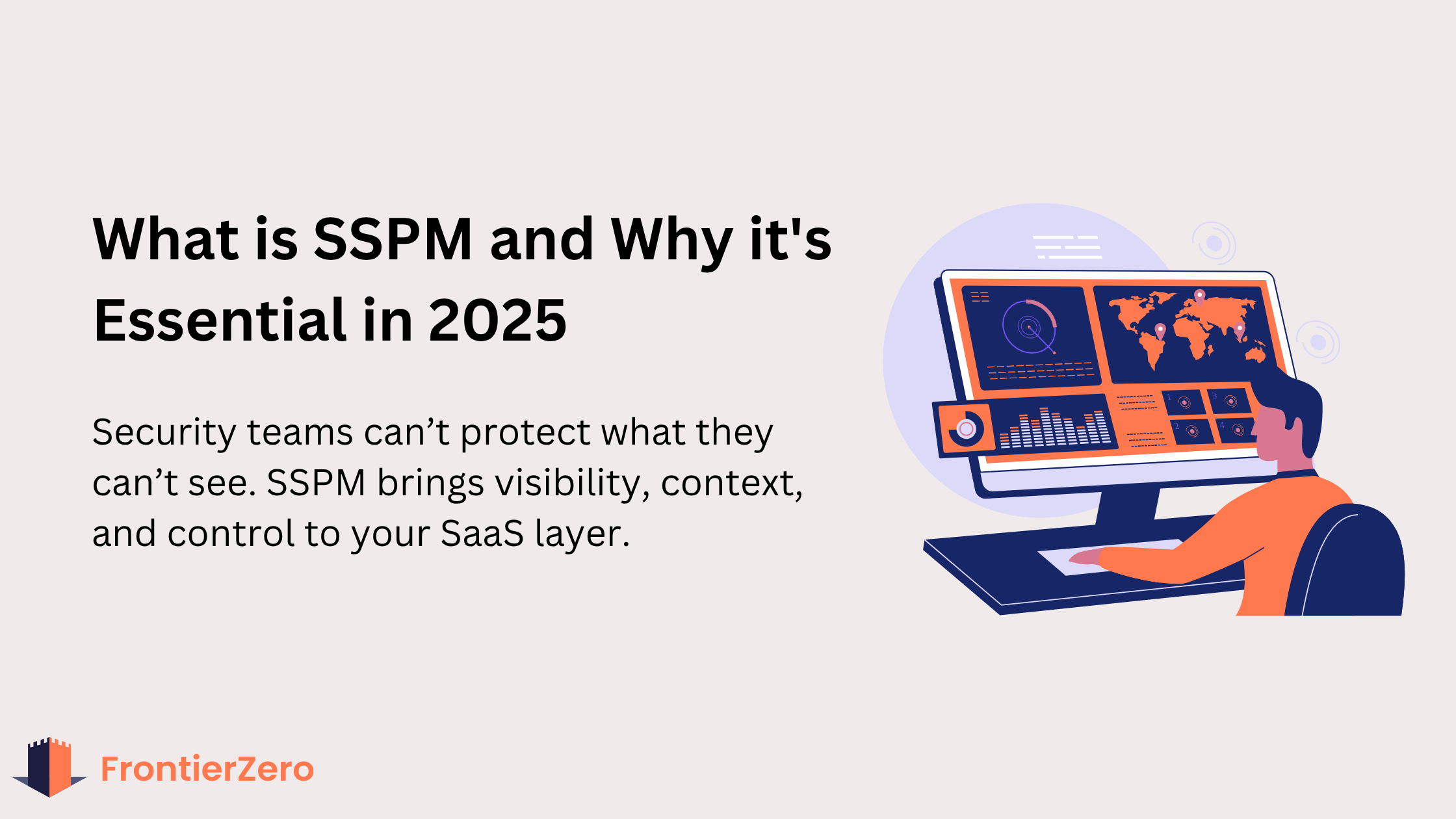
In the modern workplace, SaaS apps are everywhere. Google Workspace. Slack. Notion. Zoom. Jira. Dozens more.
In fact, 95% of businesses used SaaS apps in 2024.
They power how your people work. But they also create a new kind of security challenge:
- Identities are sprawling across tools, users, and contractors.
- Sensitive data is living outside the traditional perimeter.
- Access is often granted once and never revisited.
- New tools are added by teams without security involvement.
This isn’t a theoretical risk. It’s the new attack surface.
And it’s why a new category of security solution emerged: SSPM.
What does SSPM stand for?
SSPM stands for SaaS Security Posture Management.
It’s a framework and a set of tools designed to help security teams:
- Discover and monitor all SaaS tools in use
- Detect misconfigurations and poor posture
- Understand and control identity access across tools
- Ensure continuous compliance
- Respond faster to risky behavior
You can think of SSPM as bringing visibility and control to the layer where business now happens: your SaaS stack.
Why SSPM matters
Legacy tools were built for endpoints, networks, or email.
But today, that’s not where most of your business runs.
- Employees are connecting apps like Notion, Miro, or ChatGPT to your drive.
- Contractors are granted access to Slack or Jira and never removed.
- OAuth tokens and browser extensions go unmonitored for months.
Modern SaaS is decentralized, fast-moving, and easy to overlook. That’s exactly why attackers love it.
Nearly 60% of breaches now involve human error or misuse, and this is amplified by SaaS complexity.
SSPM gives you back the visibility and control that the SaaS era eroded.
Looking for a real-world example? Read our blog on SaaS supply chain attacks to see what happens when the breach isn’t yours—but the fallout is.
What does a good SSPM platform provide?
- Discovery of all apps in useShadow IT isn’t just unmanaged devices anymore. It’s entire SaaS tools your teams rely on that security never approved.
- Identity and access intelligenceSSPM should show who has access to what, across every SaaS app—including risky combinations like contractors with admin access.
- OAuth & integration visibilityYou need to see what apps are connected to each other, where data is flowing, and what OAuth scopes were granted.
- Posture assessmentFrom MFA enforcement to public file shares, SSPM should flag misconfigurations that weaken your security posture.
- Risk scoring & contextNot all risks are equal. A good SSPM platform combines internal signals (like behavior) and external ones (like dark web exposure) to highlight what really matters.
- Compliance mappingSaaS environments touch PII, financials, customer data, and more. SSPM should help you align with frameworks like ISO 27001, NIST, and GDPR.
Dive deeper into how this works in our CISO Guide to SaaS Compliance.
How FrontierZero does SSPM differently
Most SSPM platforms focus on configuration. That matters. But it’s not enough.
We believe identity is the new perimeter. And identity without context is just noise.
FrontierZero brings:
- Live visibility into users, admins, and connected tools
- Identity-first risk detection, not just checklists
- Context from behavior, SaaS posture, and external signals (like the dark web)
- Fast, guided action to reduce risk without slowing down business
We don’t just tell you a user is risky. We show you why.
Want to understand human risk in SaaS better? Explore our guide to human-centric security.
SSPM is no longer optional
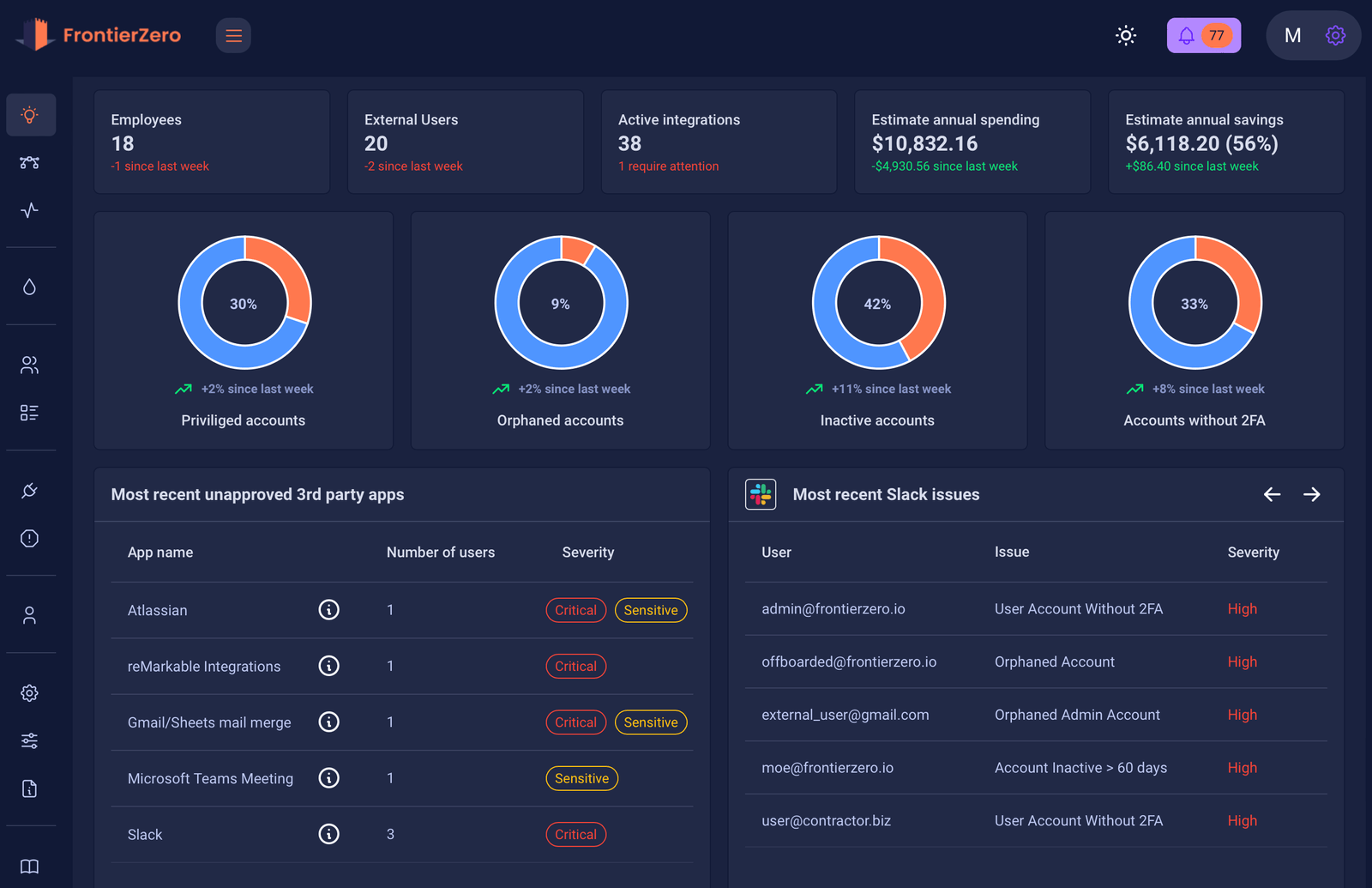
The old model of protecting laptops and firewalls isn’t enough. SaaS security has become the frontline.
If you’re:
- Unsure what apps your teams are using
- Unable to track identity sprawl
- Concerned about compliance in the cloud
…then SSPM is the next layer you need.
And if you want to see what that looks like in your real environment, we’d love to show you.
👉 Start your free trial today or contact us for a private walkthrough.

